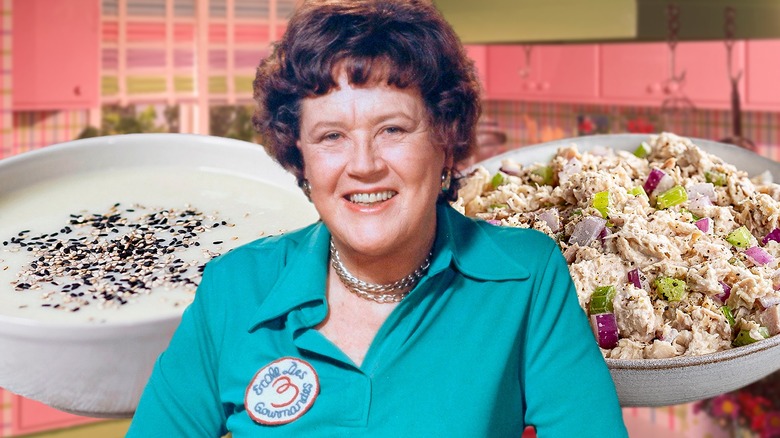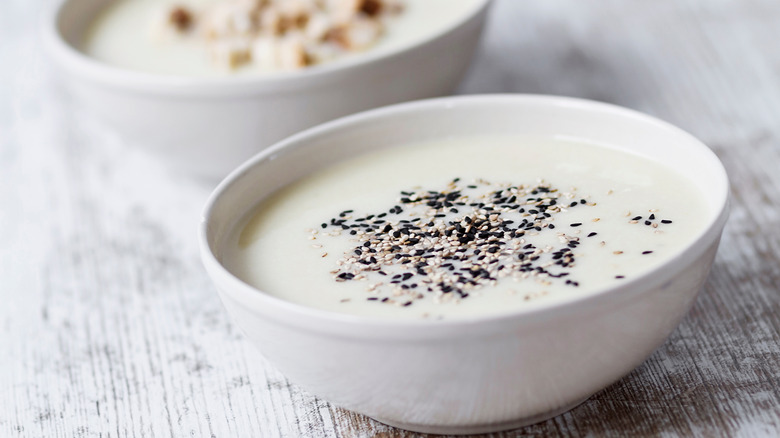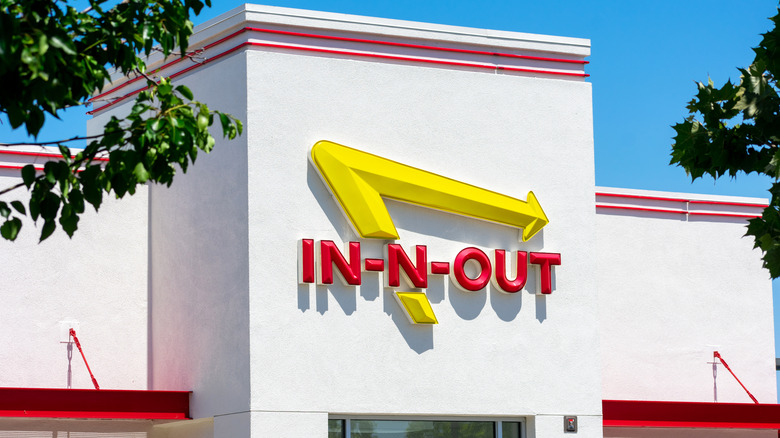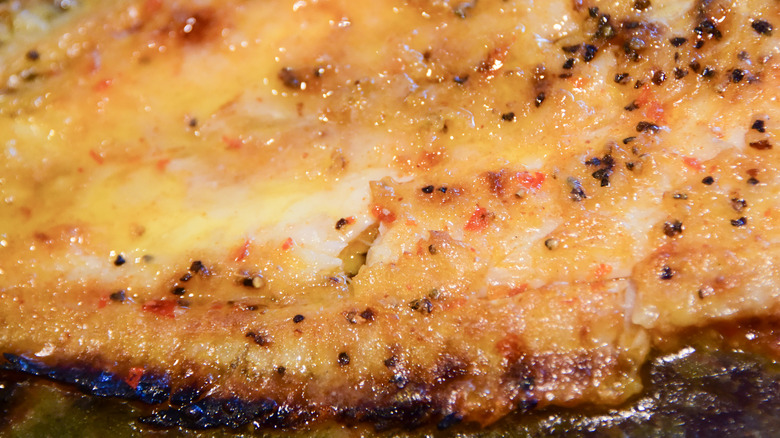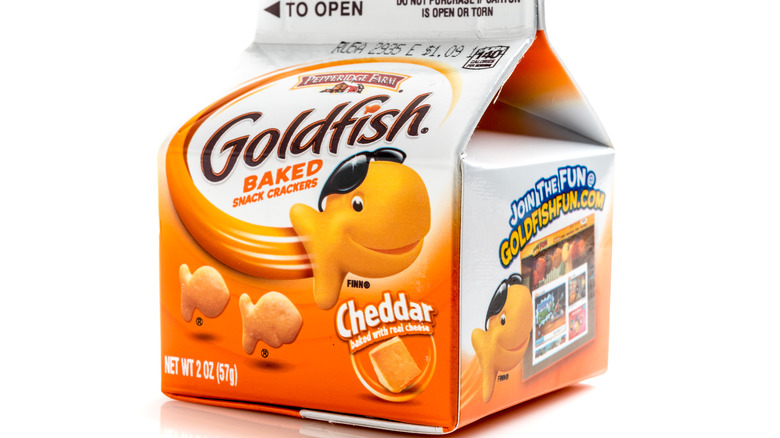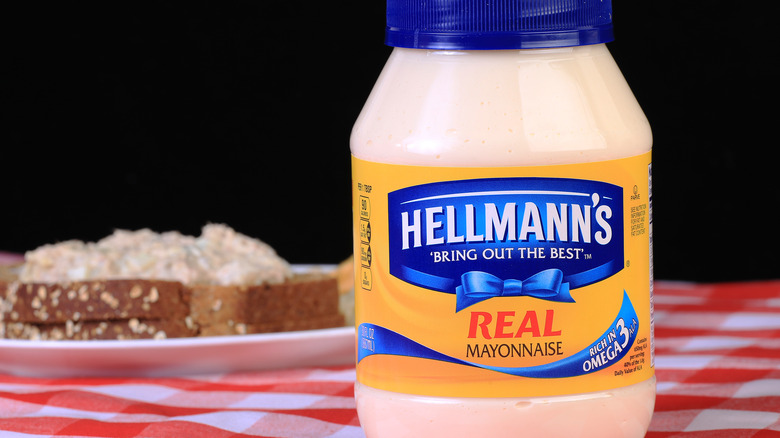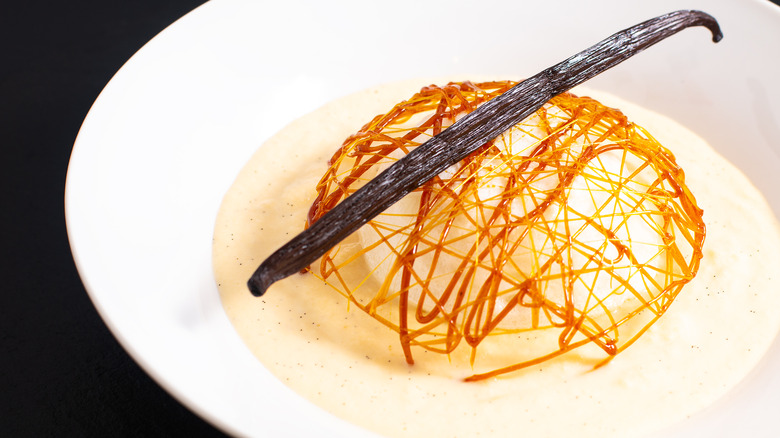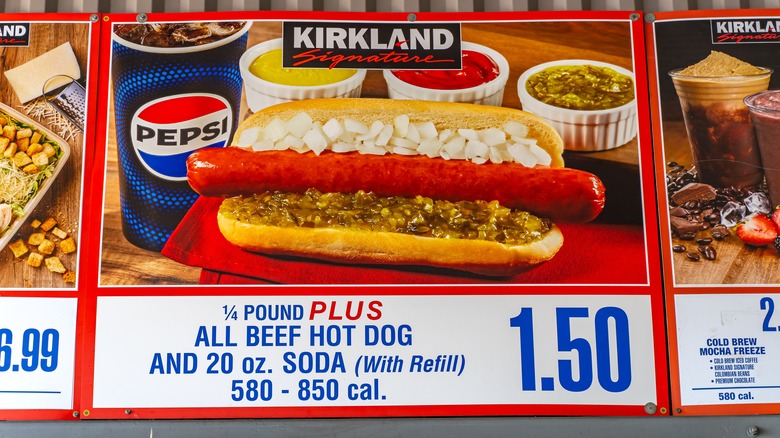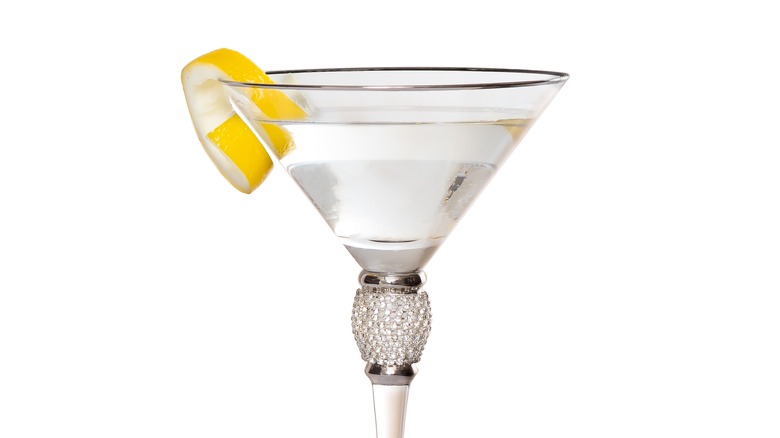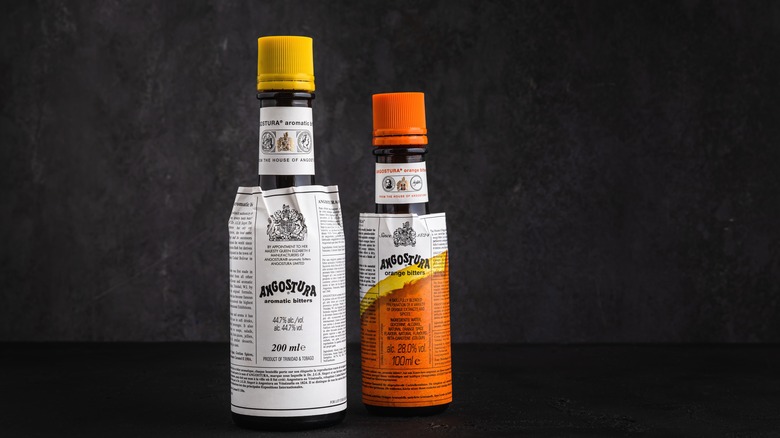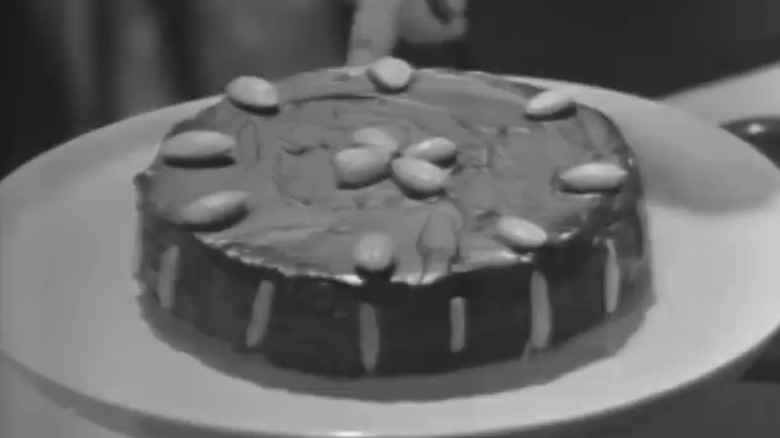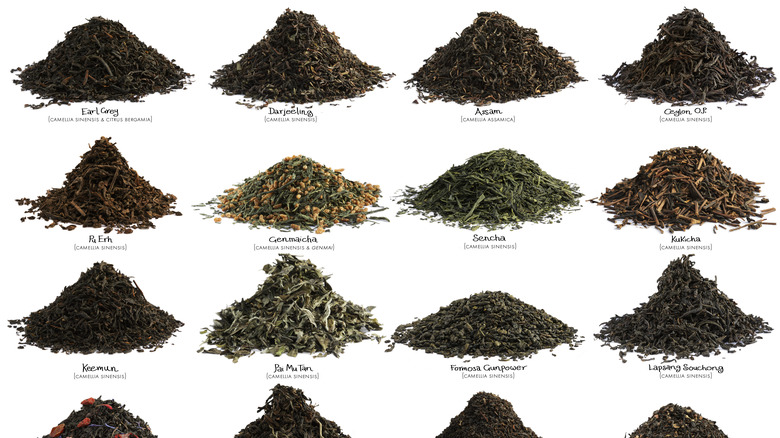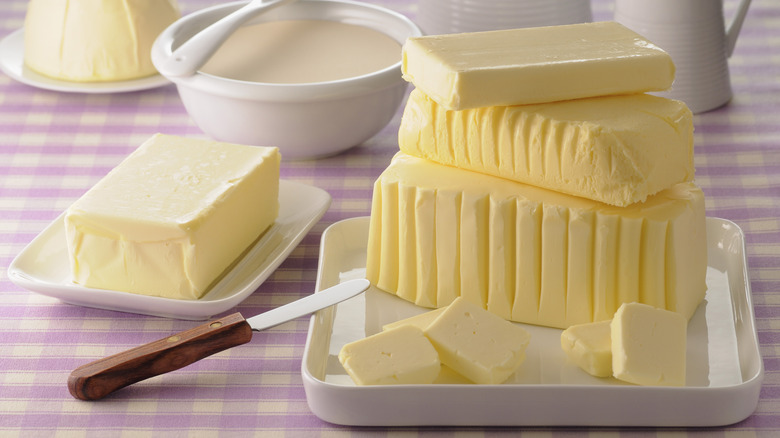12 Of Julia Child's Actual Favorite Foods
People usually think of Julia Child's favorites as being her "best" recipes from her cookbooks and TV shows. However, she had her own favorite foods, some of which were French, and some of which might be quite a surprise. Child was known for being down to earth, and her goal was to make French cooking very accessible to the average home cook. Her list of favorite foods shows just how down to earth she was, with some very comforting and basic foods rubbing elbows with fancy French concoctions.
But as Child has said, meals don't have to be these fancy ordeals; you just want to have good, fresh food. That food can be something you might find in a Paris bistro, but it may also be something you find in a company's discount store (we're serious, you'll see) or even fast food. With that in mind, here's a look at the food and drink that Child herself loved to have as she helped the rest of us learn to cook French recipes.
Vichysoisse
One of Julia Child's all-time favorite dishes happens to be a French classic: vichysoisse. This is a potato-leek-cream soup that's served cold, and all you have to do is chop up the ingredients, mix, simmer, and blend. It's simplicity in a bowl, although cleaning and chopping leeks can take some time. It's not a fast soup, either, with a suggested cooking time of close to an hour.
Vichysoisse was named after the Vichy region of France. There's some question as to who first created it, but many cooks credit Louis Diat, a chef who, as a child, would cool down his grandmother's potato soup by adding milk. Regardless of the soup's origins, it's once that just about anyone can make. Its plain nature also means it's a great showcase for fresh, quality ingredients; because there isn't much that you need to add, the quality of the foods you use will be very evident.
In-N-Out
Julia Child may have loved and promoted French food in all its gourmet glory, but she was not into dismissing other types of food that people loved. At least, not dismissing most types; she wasn't too thrilled with the pompous attitude that surrounded organic food years ago. That being said, she was very happy to dig into, of all things, fast food. While she liked McDonalds and Burger King, her favorite was apparently In-N-Out.
It's not known which order was her favorite, or whether she preferred any secret menu items to the chain's basic burger meals. Chef Jamie West, who drove Child to and from a food demonstration in California, told the Ventura County Star in 2019 that they stopped at In-N-Out when driving both to and from the event. West said one worker at a Santa Maria In-N-Out kept looking over at them and eventually asked him if the woman he was with was Julia Child.
Sole meunière
Julia Child's life after 1948 — and all her contributions to the culinary world — would not have been the same had she and her husband waited to get something to eat after arriving in France. Instead, they chose to get lunch at Restaurant La Couronne in Normandy, near where they had officially arrived in the country. It was there that Paul Child ordered a lunch of oysters, green salads, and sole meunière.
Child was stunned by the food, especially the sole meunière. This is a simple white fish in a lemon and butter sauce, but the flavors in that dish stuck with Child. It was literally the first French food she had ever eaten, and it was also apparently the first time she'd eaten fish that wasn't something fried up after a fishing trip or plainly poached at home. The dish was a revelation to Child and set her off on her quest to learn French cooking.
Goldfish crackers
You may think of Goldfish crackers from Pepperidge Farm as being the last thing that Julia Child would ever touch. They're often associated with picky toddlers and bored kids in search of snacks, but your assumption would be wrong. Turns out Child loved the cheesy orange morsels and would buy huge boxes of them from a discount store that Pepperidge Farm owned. She actually served them at Thanksgiving along with her favorite martini, and she didn't do that to be cute — she did it because they tasted especially good when paired with the drink.
An amusing fact is that Child was still technically eating a European food. Goldfish crackers were based on a similar cracker made in Switzerland. When Margaret Rudkin, the founder of Pepperidge Farm, sold the company to the Campbell's Soup Company in 1961, she remained on the board and helped look for new products. One was that Swiss, fish-shaped cracker, and Rudkin managed to get the recipe. By the way, about that image of goldfish crackers as kids' food: The crackers were originally meant to be a bar snack for adults. It wasn't until the 1990s that the push to market the crackers to parents for their kids took hold. As of 2022, Pepperidge Farm has been shifting some marketing of the crackers back toward adults.
Tuna salad with Hellmann's mayo
If you were going to eat lunch at Julia Child's house way back when, would you have expected to be served something French and fancy? Well, that's not what you would have gotten. Child would have served you tuna salad, either open-faced on half an English muffin, or sandwiched between two slices of Pepperidge Farm white bread — and the mayo would have always been Hellmann's brand.
Child served this as lunch for two reasons. One was obviously because she liked it, but also because it was a relaxed lunch that she could make quickly that still tasted fantastic. She didn't want to have fancy food for lunch, so the tuna sandwich became a staple at lunchtime gatherings. Child wanted to make it for guests even as she was preparing to move from her home in Massachusetts to a retirement home in California. When she promised a tuna sandwich to one reporter, however, she decided last-minute to make a lobster salad sandwich instead, using the same recipe.
Île flottante
The fancy île flottante means "floating island," and it's a good description for this dessert. It's one of Julia Child's favorites, but it's also an incredibly sweet recipe. If you love your desserts to be very sugary, this is worth making. If you don't have much of a sweet tooth, ask for a small portion only.
Île flottante is an old recipe, one of those that likely started out as an economical dish in home kitchens, that later made its way into restaurants and cookbooks. The "floating island" is a mound of poached or baked (Child preferred baked) meringue "floating" in a sea of crème anglaise. If you poach the meringue, poach it in milk; the meringue itself is merely egg whites, cream of tartar, and sugar. The meringue usually has a topping of caramel sauce or some type of sugar art. The crème anglaise is a simple custard sauce. The recipe isn't exactly easy, but it is straightforward if you know how to successfully make egg custards and meringues.
Costco hot dog
Shopping at Costco with Julia Child would have been an amazing experience, and not just to see what she might have bought. There is a good chance you would also see the woman known for bringing French gourmet cooking to American home kitchens chow down on a Costco food court hot dog. As it turns out, it was one of her favorite foods and the one item she'd always get at the food court in Goleta, California, near her retirement home in Montecito.
Child, it turns out, was a fan of Costco and routinely shopped there for supplies. Among her favorite items — in addition to those hot dogs — was the meat selection. If she was making steaks for guests, you could bet the meat came from the local Costco warehouse. Each shopping trip included a stop at the food court to get a hot dog after she was done buying food.
Upside-down martini (a.k.a. reverse martini)
The upside-down or reverse martini is well-named because it literally reverses the proportion of ingredients in a martini. The classic martini has five parts gin or vodka and one part vermouth. Julia Child preferred hers — and she'd serve them this way — with one part gin or vodka and five parts of extra-dry vermouth, plus a twist of lemon. In fact, this was her favorite drink to have along with a few of those goldfish crackers.
One of the advantages to making a martini this way is that the amount of alcohol is much, much less than in a traditional gin/vodka-heavy martini. Vermouth does contain alcohol, but its concentration is much less than that of gin or vodka. In a classic martini, all that extra alcohol adds up, but in the reverse version, you get much less because the drink is mostly vermouth. Interestingly, this is also closer to how dry vermouth is apparently treated in Europe, where it is its own drink rather than a garnish for other alcohol.
Angosoda
Julia Child wanted to her readers and viewers to know how to cook French food the French way, but she wasn't above creating her own completely new recipes if necessary. While her main favorite alcoholic drink was that upside-down martini, she also liked drinking this concoction that she created herself. The angosoda cocktail is a mixture of a few drops of Angostura bitters and sparkling mineral water (this is essentially an Angostura soda, hence the name), with a slice of lime and ice cubes. She created the recipe as a way to have a cocktail without ingesting too many calories, which the upside-down martini had plenty of.
If you've never had Angostura before, looking it up can be a bit confusing. Angostura is the name of a South American tree with bark that has medicinal properties. Angostura is also the name of a company that produces Angostura bitters, which no longer contain actual angostura compounds. Bitters are herbal infusions that can contain alcohol; some don't, and those use vegetable glycerin as their base.
Chocolate almond cake (gateau reine de saba)
Julia Child said that chocolate almond cake, or gateau reine de saba, was the first French cake she ate. Like sole meunière, this cake became one of her favorite dishes. In her episode showing how to bake the cake, she calls it "the best chocolate cake you ever put in your mouth," and her recipe is a classic. The one-layer cake uses a mix of cake flour and ground almonds to create a soft, rich cake that's one of those dishes where a small slice can be incredibly satisfying. The outside looks like a regular chocolate cake topped with frosting and almonds, but the inside is just undercooked enough to make the interior creamy. By the way, if you need to eat gluten-free, you can find versions of the recipe that use all almond flour and no wheat flour.
Gateau reine de saba is also known as Queen of Sheba cake, but if you want to make it and intend to serve the cake Child loved, stick with the recipe she used (or an allergy-friendly/gluten-free version that's specifically based on her recipe). It turns out that the name "Queen of Sheba cake" has been given to several cakes over the years. They're similar in that they're all supposed to have moist interiors and have short cooking times. However, the recipes differ enough that you'll want to be careful when choosing one if you intend to make Child's version.
Tea
Julia Child's actual kitchen was moved to the Smithsonian and, as of 2024, it has been a part of a display on the transformation of American food. If you get a chance to see it, you'll notice a row of tea tins neatly lined up against the wall on a counter next to her stove. One of the cabinets above it also contained tea tins, and Child and her husband were known to drink tea with breakfast every morning. In her later years, Child said that heating up tea was one of the few things she used her microwave oven for.
While it's not easy to find out which type of tea was her absolute favorite, she did have a good number of Chinese and Sri Lankan teas on hand. China Keemun, China jasmine, Sri Lankan Cheericup Ceylon, and a variety of Lapsang Souchong are among the varieties you could find if you ever had the opportunity to browse through the tins.
Butter
This wouldn't be a list of Julia Child's actual favorite foods unless it mentioned butter. This is more than just a frequent entry in ingredient lists; it's one ingredient that Child has always defended. She did suggest you could use cream in place of butter, and she had been known to admit that sometimes you could use a butter substitute — but that admission would also be followed up by a statement that you'd regret actually trying it.
In Child's kitchen, butter was the base for wonderfully simple steak sauces; if anything else like oil were added to the pan, it was usually to help the butter avoid becoming burnt at high heat. Child was so knowledgeable about cooking and baking with butter that she could tell by taste if a recipe didn't have enough. As she got older, she had to start watching calories herself, but she still used butter (and even said that melting butter was one of the few things she used a microwave oven for).
If you still don't believe that Child's favorite ingredient was butter, then let the numbers do the talking. An analysis in the r/dataisbeautiful subreddit showed that butter was by far the most frequently mentioned ingredient in Child's "Mastering the Art of French Cooking," with nearly 1,600 mentions. The second ingredient with the most mentions was egg, with slightly more than 800 mentions.
